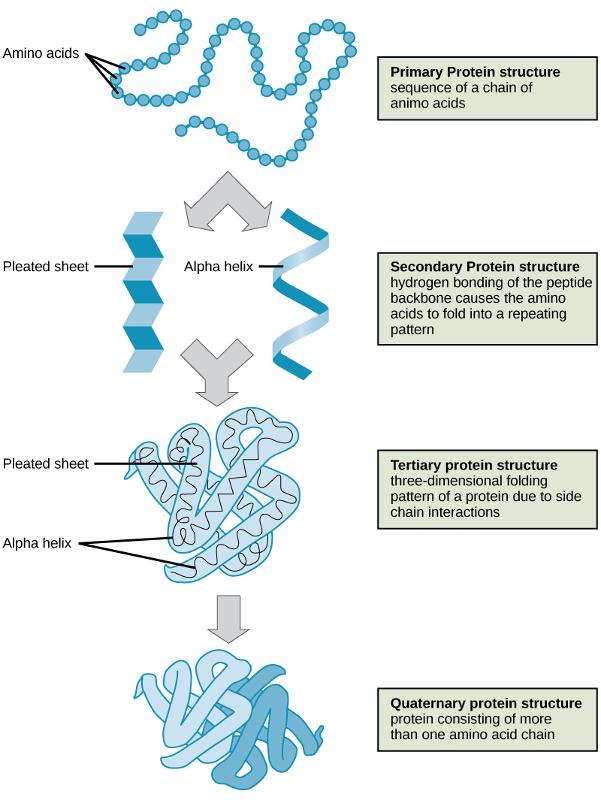Protein Structure
There are four levels of protein structure:
- Primary structure refers to the amino acid linear sequence of the polypeptide chain (represented by the blue pop beads joined together), which is determined by the gene corresponding to the protein. The sequence of a protein is unique to that protein, and defines the structure and function of the protein.
- Secondary structure refers to highly regular local sub-structures. Two main types of secondary structure, the alpha helix (right hand spiral ) and the beta strand or beta sheets (twisted, pleated sheet), are defined by patterns of hydrogen bonds between the main-chain peptide groups.
- Tertiary structure refers to the three-dimensional structure (folding pattern) of a single protein molecule.
- Quaternary structure refers to the three-dimensional structure of a multi-sub-unit protein and how the sub-units fit together (light and darker blue chain represent separate proteins).

Figure 10: The four levels of the protein structure. As you read above, primary protein structure is the amino acid sequence and is depicted at the top of this image by a chain of circles (amino acids). Secondary protein structure is the folding of the amino acid chain, and can be a pleated sheet or a helix. Tertiary protein structure is how the sheets and/or helices fold on top of one another and quaternary protein structure involves the arrangement of and relationship between more than one amino acid chain.
CC BY: OpenStax College



